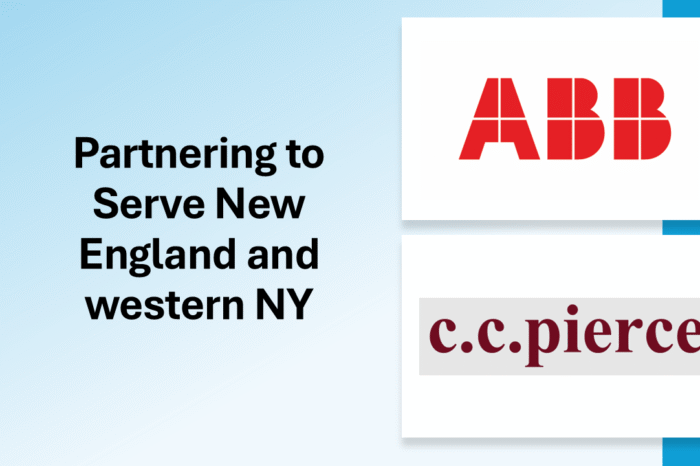Expectations of Reps Drives Model Options

Have you noticed that with all the manufacturer and distributor mergers & acquisitions, that manufacturers representatives are following a similar strategy?
For reference, since last August:
- There have been at least four major mergers of lighting agencies (most notably in Texas / Oklahoma, a couple in the Midwest, and in the NY / NJ / eastern PA area.)
- JD Martin expanded into Florida, North Carolina, South Carolina and Nevada. Much of this was spearheaded with ABB.
- UES acquired TF Farmer and moved into North Carolina, South Carolina and southern Virginia.
And I’m sure there are more that I don’t remember / haven’t seen.
CURRENT STATUS
I admit after being a rep for nearly 50 years, I have a distinct prejudice for representatives. When I got into this industry as a rep we had a finite number of customers and spent nearly 90% of our time selling distributors. Compare today’s representative and and responsibilities. Representatives now call on, theoretically, an infinite number of customers. Manufacturers now expect representatives to touch anyone that might make a decision, or influence, the purchase of their products: distributors, contractors, specifiers, MRO’s, OEM’s, engineers, architects, utilities, etc.
Leading manufacturer representatives have accepted this challenge, or evolution, and, while in most cases commissions have declined, have accepted this responsibility in order to stay in business. In the last few years an increasing percent of of time is also spent expediting, pricing and keeping track of the various needs of all including a degree of paperwork (or I should say “administrative work” since more is dealing with portals and other manufacturer specific software) never before anticipated. And this takes away from actual selling … when there are more buying influences to call upon.
Often a manufacturer evaluates their rep investment effectiveness based on the number of outside salespeople they might need to replace a rep. Essentially evaluating their sales options – direct salesforce or a rep. I wonder how many consider the value and cost of the many inside salespeople that they “save” by having other “sales activities” (administrative work, pricing, customer service) conducted by a rep agency? How many less calls / inquiries do they receive?
Without reps conducting this service, perhaps the future is that distributors will have to deal with getting all of their answers from manufacturer portals and chat bots as humans become too expensive to speak with? Can reps continue to afford providing the personal touch for a manufacturer if they are not compensated?
I had a recent conversation with a lighting representative I respect. I have also known this agency for as long as I have been a rep, and they are outstanding in their ability to generate specifications. At one time, many years ago, we were considering a merger of our companies. He asked me what our average commission rate was knowing our company called on many of the same customers they did. I told him we averaged less than 5%. He told me his company commissions and overages averaged just under 20%, and he asked how we could afford hiring and other activities that enabled us to be successful in our efforts. His company also represented over 130 manufacturers, including many with conflicts, whereas conflicts are seldom allowed for electrical supply reps. One of his manufacturers told me that as long as they hit their numbers for his company, their having conflicts reduces his competition in the market.
CHOICES
It started me thinking and recognizing the struggles we speak often about at NEMRA, network meetings and directly with manufacturers. I truly am not suggesting all representatives are equal in their offerings any more than distributors or manufacturers are.
Key issues for discussion that impact the changing rep / manufacturer relationship include:
- What are your rep expectations and how can they be supported in the way you want them?
- Are specification efforts necessary or demanded?
- Does your representative handle the order input, expediting or pricing? What is the value of this?
- How are engineering calls handled that take long sales lead times before potentially coming to fruition? Are they appreciated? Compensated?
- Are you paying all of your reps the same regardless of effort? Are different models considered to support gaining agency / territory specific goals?
- Do distributors recognize rep efforts on behalf of their manufacturers? Do they value the customer service aspect? The support aspect? Does rep support influence which lines a distributor supports? How much does this count for?
The supply rep has alternatives to exist within the parameters of their manufacturers. Truly, they can choose to sell direct; quote direct; do buy-sells or even sell with overages to maintain their company’s existence and generate the profit necessary (and yes, this change change by the lines that they carry.) All of these methods are being used today and I question if manufacturers and distributors recognize who is doing them and how / if this is factored into any decision process. A lighting manufacturer told me that allowing overages enables his company to keep commissions lower to his reps.
The more conservative approach that representatives have historically used is to ad new manufacturers. A major “concern” of manufacturers, expressed when interviewing representatives, is that there are too few reps (and “good” reps) in the areas they are looking. Read above and it might tell the story as to why. Does adding manufacturers really add to the bottom line for representatives and actually benefit existing manufacturers if they lines are not synergistic with their current offering or the rep can not adequately support the line from a time viewpoint?
And I know NEMRA shared some of these challenges in the Channel Marketing Group produced white paper called “Rep of the Future – 2025”. (If you are a NEMRA member, you can receive a free copy as a member benefit, otherwise it is available for purchase for only $495).
ALTERNATIVES
Representatives can grow their coverage in their existing geography (let’s call this vertical, or product offerings) by increasing their offering as many manufacturers and some distributors are doing. Many supply reps are getting into lighting, gear or low voltage protection products. A natural next step is various renewables (solar, battery, EV, microgrid, utility, etc).
Representatives could more broadly expand to grow their business, support their distributors and their manufacturers as well as engage new distributors and manufacturers by broadening beyond “electrical”. This is likely as distributors are getting into HVAC and industrial products. It could also benefit manufacturers as they diversify their electrical and non-electrical offerings. As the former president of the Philadelphia Electrical Association and a HVAC contractor told me, “we are doing far more electrical today and our HVAC distributors are purchasing more electrical products from wire and conduit, fittings and VFDs.” He even said “if electrical distributors carried Freon, I would likely be spending far more money there.”
The other area of growth is geographically expanding (horizontal), as many are now experiencing. Acquisitions are one way. Another is utilizing one office or sharing inside and warehousing facilities to support local (perhaps “remote” is a better term) outside sales people. This can result in lower operating costs and increased support. This allows maintaining local relationships and getting faster and better-quality associates, not only able to answer questions and support the representative’s customers but expanding the representatives’ value with increased services such as layouts and other valued services.
HOW IT MIGHT BE ACCOMPLISHED
A merger of services can be accomplished by one representative purchasing another. However, this doesn’t have to be the only option. Consider … years ago, a quality representative in another territory contacted me. He was frustrated by paperwork and inside sales efforts presented to him by his manufacturers. We shared a few of the same manufacturers. He asked if our company would consider managing and doing his inside sales for a monthly fee. Essentially, sharing resources that our firm would manage. At the time, we had just opened another office, and I did not believe it would work. I was wrong. Today I believe these efforts would work and could be very successful. Nowadays the technology exists to support this like never before. And do distributors, end-users or factories care where people are located? Consider the efficiencies that could be generated.
Some call this “shared services.” Conceptually this can work for a number of representative support functions such as inside sales, customer service, take-offs / layouts, training, warehousing, marketing support and more. Especially since it can be supported by common technology platforms.
Some 15 years ago a few regional representatives got together with a similar concept to support the fire protection market nationally. There would be one central office and dedicated inside sales and layout people supporting the existing agencies. We discussed with a few larger manufacturers who were not in the electrical market and they appreciated the concept. We went to see the President of a large national distributor who concurred, and he committed his company to the manufacturers and representatives as we had outlined. The effort was ended when one of the large manufacturers sold to another who did not want to combine their efforts.
Some might remember when 5 or so manufacturers of quality products some years ago decided they might combat the growing manufacturer mergers by offering a 1 order-1 shipment-1 invoice together concept to support their efforts to remain independent. They came to the market with a program and the industry did took notice. It was not successful. I asked the President from one of the participating companies why it failed. His response was that “it should have succeeded, but each of us had strong egos that would not allow someone else to manage others’ responsibilities and we didn’t trust enough for everyday decision making.”
As David Gordon wrote just a few weeks ago, “bigger does count!” whether it be a manufacturer, distributor or representative. “The times are changing” and all of us need to recognize those changes, understand them and take advantage of the opportunities the times might present to us. Sometimes we need to brainstorm new models to ensure our continued existence.
Perhaps what reps might need is a clearing house for those searching for alternatives, mergers or joint ventures?
Reach out if you’d like to confidentially discuss. Perhaps we can help you envision your future?























